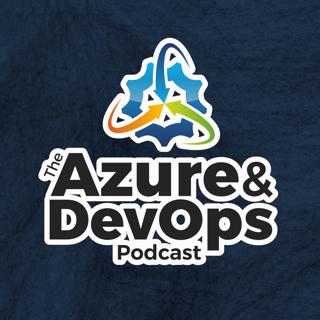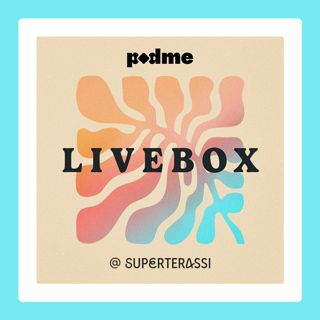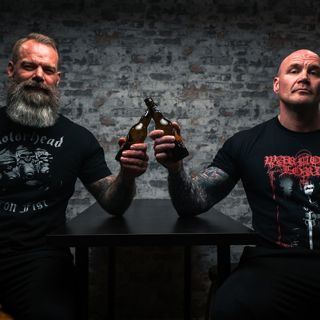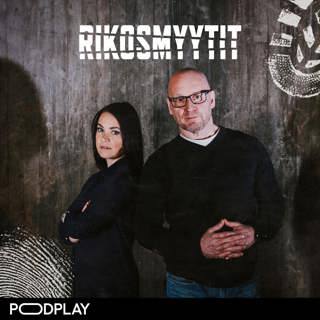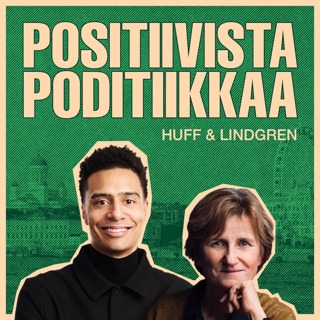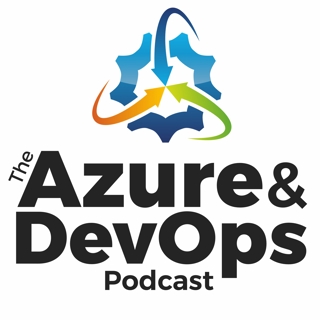
Daniel Markham: How to Share What You Know - Episode 187
Daniel is a semioticist logician (otherwise known as a programmer). He likes to help people learn to make better tech. He believes that once you know the “why,” you can figure out the “what” on your own. As an active coder and manager, Daniel has spent time the last several years with clients as an Agile/XP Technical Coach, helping them rediscover how to discover and create value at speed. His clients include several Fortune 100 companies all over North America. He is also a technical coach and the author of Info-Ops and Info-Ops ll cross-dedicated and shared (due to high cost/low availability) hardware systems. Package management and high-layer orchestration through other tools, layers is where Azure is partially intersecting. Topics of Discussion: [4:41] Dan talks about his website and building a place to learn and relax. [5:55] Dan discusses when he learned that he wanted to teach others and share what he had learned. [9:43] Dan walks us through his setup and how he focuses on the content more than the technical aspects. [11:38] What is Dan’s chosen format for getting it up on a video? [16:22] How does Dan prioritize what he is teaching? [18:13] What should new programmers know? [20:23] It’s important to step outside the constraints you are given. [21:38] What’s “good enough programming?” [23:49] Strong typing systems are only useful in the terms of one particular business feature at one time. [26:24] The platform and the language choices should actually tell the business something they didn’t know before. [33:57] By creating these larger universal-type systems, we’re subsuming the business into the code. Mentioned in this Episode: Architect Tips — New video podcast! Azure DevOps Clear Measure (Sponsor) .NET DevOps for Azure: A Developer’s Guide to DevOps Architecture the Right Way, by Jeffrey Palermo — Available on Amazon! Jeffrey Palermo’s YouTube Jeffrey Palermo’s Twitter — Follow to stay informed about future events! Want to Learn More? Visit AzureDevOps.Show for show notes and additional episodes. Quotes: “I used to tell people you know, at heart, I really am a writer. I’m a writer who can program very well and has a sort of natural skill in programming.” — Daniel “I think it’s important to demonstrate kicking back and just talking about what’s going on in the tech world without any sort of altering your agenda.” — Daniel “I find that we have a lot of people trying to be perfect programmers who have no experience of being good enough programmers, and that’s a problem the industry’s had for a long time.” — Daniel Daniel: Website | Dark | Podcast | Books
4 Huhti 202242min

Kevin Kirkus on Automated Testing Embedded Code - Episode 186
Kevin Kirkus is a Principal Engineer at Intel. He has been there since 1999, designing, building, and testing Intel processors, both the chip and the code that runs the chips. Kevin is a Post-Silicon Validation Architect Lead for multiple Intel Xeon generations and more recently transitioned to Global Post-Silicon Automation Lead for server, client, and device products at Intel Corporation. He has served in various past areas of validation, such as PCIe, socket-interconnect, Platform Configurations, Boot Flows, Fuse, before transitioning to more technical leadership roles in validation architecture and strategy. As a Technical Leader in silicon validation automation, his roles and responsibilities have extended to global standardization and alignment of tools, flows, and methodologies across Intel global product segments (server, client, device), including mentoring environment domain, leads, aligning global sites and strengthening local product sites to excel in automation investments. His technical and leadership experience for validating advanced complex technology has been integral to the success of Intel product teams and their competitive products. He is passionate about developing people and future leaders, building on their strengths, influence, and impact. Topics of Discussion: [3:33] What are some high points that lead Kevin to where he is today? [8:06] Kevin talks about focusing on functional validation execution, and what he likes as a Post-Silicon Validation Architect Lead. [9:03] Kevin walks us through the process from where the code is embedded, the silicon is made, and there’s a system of trial and error to test if you are on the right track. [15:33] What are the penalties for the turnaround time? [15:48] What is the mix of code types that are a part of this? [17:18] Kevin talks about the concept of fuses and SKUs or stock-keeping units. [21:12] Kevin talks about the format of the test themselves, the language in which he writes the test cases, and the partnership between the host and target system. [31:42] Where are test harness codes and firmware loaders stored? [31:47] Firmware has to be handled a little bit differently; it has to be cross-platform deployment packaging. [35:20] Most of Intel Xeon’s solutions are proprietary, and their bug tracking is proprietary. [39:05] How does Kevin coach people to have the technical skills they need in this space? Mentioned in this Episode: Architect Tips — New video podcast! Azure DevOps Clear Measure (Sponsor) .NET DevOps for Azure: A Developer’s Guide to DevOps Architecture the Right Way, by Jeffrey Palermo — Available on Amazon! Jeffrey Palermo’s YouTube Jeffrey Palermo’s Twitter — Follow to stay informed about future events! Want to Learn More? Visit AzureDevOps.Show for show notes and additional episodes. Quotes: “My job starts when they have gotten to the point where it boots up and it’s reaching the point of fetching the operating system code to where we can actually see it in the operating system.” — Kevin [20:02] “If we can deliver a healthy environment to our functional validation team, it gives them a chance to focus their energies on writing tests that actually find the most bugs.” — Kevin [39:54] Kevin Kirkus: LinkedIn Intel Intel Xeon
28 Maalis 202247min

Sam Nasr on Azure AI & ML - Episode 185
This week, Sam Nasr returns to the show. Sam is an IT Consultant specializing in .Net, SQL Server, and Azure. He is a Sr. Software Engineer focused on the Microsoft stack of technologies including .Net, SQL Server, Azure. As part of NIS Technologies, he provides consulting services, training, and custom app development to bring more value to business applications. Sam is also a leader at the Cleveland C#/VB .Net user group. Topics of Discussion: [2:37] Sam talks about getting inspiration from a video featuring Saquib Shaikh, a blind software engineer at Microsoft that developed services that helped him get by day-to-day, which was made public. It was a moving video and it got him into cognitive services, and he started diving more into AI and ML from that point. [4:10] How are AI and machine learning similar? How are they different? [4:15] Do you have to use the Azure services? [6:27] What are some of Sam’s favorite AI or ML products? [8:03] With Azure Cognitive Services, it’s a variety of different services. There are some for language, some for speech, some for vision, and decision-making. [10:19] How do we go from a microphone to a text string? Does that happen on the end device, or do we send the file to Azure? [15:10] What is the testing method for this type of application? [18:09] How does this relate to bot framework? [24:28] What applications does it tend to work best on? [26:50] What does it look like to deploy a new release candidate from environment to environment and then to production? What is the promotion process of an application like this? [30:39] You need to have a good representation of your data. It’s got to be clean and then trained on an appropriate number of records. Mentioned in this Episode: Architect Tips — New video podcast! Azure DevOps Clear Measure (Sponsor) .NET DevOps for Azure: A Developer’s Guide to DevOps Architecture the Right Way, by Jeffrey Palermo — Available on Amazon! Jeffrey Palermo’s YouTube Jeffrey Palermo’s Twitter — Follow to stay informed about future events! Want to Learn More? Visit AzureDevOps.Show for show notes and additional episodes. Sam Naser: GitHub projects YouTube Presentations samnasr@live.com Overview of Cognitive Services: “Adding Machine Learning to .Net Applications” youtube.com/watch?v=dMHlbZvISUI Build 2016 AI Video
21 Maalis 202235min

Chris Tacke on .NET 6 IoT on Linux - Episode 184
Chris Tacke is an industry leader in managed application development for industrial process control, medical, telematics, and just about any other embedded industry. Chris specializes in Windows CE and the .NET Compact Framework, and mobile and embedded device application development. Topics of Discussion: [2:22] Fun fact! Chris got a degree in Geology long ago, and his first job was doing seismic work and hand-analyzing a lot of data. Chris talks about his first foray into programming, a job in Excel, writing VBA macros to analyze the data. [4:08] Chris walks us through a job at Microsoft by way of a horse race in Virginia during the .com boom. After the .com crash, he worked at a company that made single board computers and moved to be an engineering manager for the Windows CE department. He was independent for 20+ years before joining Hypergiant, and then Wilderness Labs came onto his radar. [6:42] Chris is the owner of the Meadow Core pieces and does a fair bit of the driver development. [8:49] How does the Jetson Nano compare to Raspberry Pi? [13:47] Chris talks about the first goal to run on modern.net. [16:41] What is the vision now to say that we need to do this on Linux? [21:33] Is this the same vision as Maui, to run anywhere embedded? [23:38] How does it impact the process of building, test suites, and different test environments? [24:18] Chris talks about Meadow Test Suite, which has the goal to deploy binaries down to a device and find tests that look just like an xUnit test that can then talk to hardware. [30:56] This totally redefines the term of the “full-stack” developer. [31:12] What can people utilize today, and what is the DevOps chain Chris and his team are using? Mentioned in this Episode: Architect Tips — New video podcast! Azure DevOps Clear Measure (Sponsor) .NET DevOps for Azure: A Developer’s Guide to DevOps Architecture the Right Way, by Jeffrey Palermo — Available on Amazon! Jeffrey Palermo’s YouTube Jeffrey Palermo’s Twitter — Follow to stay informed about future events! Wilderness Labs Dev Camp ClassMeadowsOS Wilderness Labs — Github Jetson Xavier NX Series Want to Learn More? Visit AzureDevOps.Show for show notes and additional episodes.
14 Maalis 202239min

Henry Quillin on Prepping for a Career as a Software Engineer - Episode 183
Henry Quillin is a high school senior interested in software development, entrepreneurship, and blockchain/crypto. He has completed several internships and other contracts and recently earned the rank of Eagle Scout in the Boy Scouts of America. He always has several software projects going including ProjectNEWM, an attempt to decentralize the music industry, and when not buried in VSCode or books, he enjoys weightlifting, cooking, and listening to podcasts. You can check out his website at henry quillin.me. Topics of Discussion: [2:39] Henry talks about becoming interested in software development and programming as early as 4th grade. While his friends were playing video games, he was creating them. [5:00] Henry discusses his first shadowing experience that ended up turning into a paid internship at Jackson & Ryan Architects. [10:10] What was it like for Henry to see the development process from a bird’s eye view during his first paid internship in tech at a startup called Original Nations? [10:47] How did Henry get into Clear Measure? [12:18] Henry talks about the huge community in programming that wants to help and how they have connected him with different opportunities. [12:55] What is projectNEWM? How is it like a decentralized Spotify? [16:51] Henry has some sound advice for fellow young adults his age looking to get into the programming industry, and what he feels the benefits of internships are. [27:06] What is the value that Henry sees in college, and which schools are his top choices? [29:05] Henry feels that if you want to become a developer, just really try and get some experience. Mentioned in this Episode: Architect Tips — New video podcast! Azure DevOps Clear Measure (Sponsor) .NET DevOps for Azure: A Developer’s Guide to DevOps Architecture the Right Way, by Jeffrey Palermo — Available on Amazon! Jeffrey Palermo’s YouTube Jeffrey Palermo’s Twitter — Follow to stay informed about future events! ProjectNEWM Henry Quillin Want to Learn More? Visit AzureDevOps.Show for show notes and additional episodes.
7 Maalis 202238min

Chris Patterson on Messaging systems with MassTransit - Episode 182
Chris Patterson is a Principal Architect at McKesson, the oldest and largest healthcare company in the nation. He is responsible for architecture supporting applications and services that enable McKesson’s distribution and technology solutions around the globe. Chris is active in the open-source community and has created many projects including MassTransit, a distributed application framework for .NET. He also is a regular conference speaker, sharing his knowledge and experience with developers across the world. Chris is a 13-year Microsoft MVP Award winner for his contributions to the software development community. Topics of Discussion: [1:53] Chris talks about his career background and highlights, and the path that led him to be a lifetime software developer. The first application Chris wrote was a game on Apple TV, and when he first started his major professional career, he was building a lot of distributed systems. [5:44] Alt .Net became the community to say that there may be a better way to do this, with C# and .Net. [7:35] Chris gives us a full rundown of his stack. [8:50] What type of environment does Chris work in? [10:28] What exactly is MassTransit? [14:20] Chris and Jeffrey discuss Azure Service Bus and RabbitMQ. The most widely used transport with MassTransit is RabbitMQ, and for good reason because it’s a solid message broker. [18:40] Is MassTransit just for the asynchronous or is there any way for the two programs to talk to each other? [23:04] What flexibility does MassTransit give? [25:51] Has Chris seen a way to consolidate the serialization in the DTO types, so that you don’t have to have specific types all over the place just because you happen to be going over a different channel? [31:00] Is it fair to ask whether or not you want your server endpoints to be directly called by your customers, or provide them with an API that lets some of their code run in their process? [37:25] When something’s wrong with the processor, how do you get back on track? How can we even prevent it? [42:32] MassTransit is free, and Chris explains there will never be a charge to use it. Mentioned in this Episode: Architect Tips — New video podcast! Azure DevOps Clear Measure (Sponsor) .NET DevOps for Azure: A Developer’s Guide to DevOps Architecture the Right Way, by Jeffrey Palermo — Available on Amazon! Jeffrey Palermo’s YouTube Jeffrey Palermo’s Twitter — Follow to stay informed about future events! MassTransit Chris Patterson: LinkedIn | Twitter http://tech.groups.yahoo.com/group/altnetconf/ — in case this was the Alt Net Yahoo Conf group! Want to Learn More? Visit AzureDevOps.Show for show notes and additional episodes.
28 Helmi 202243min

Mohamed Kabiruddin on Migrating to Azure SQL - Episode 181
Mohamed Kabiruddin is a Senior Program Manager in the Azure SQL Product Team and is currently located in Redmond, Washington. Prior to joining the Product Team, he was a Cloud Solution Architect working with enterprise customers in Australia on all things Azure Data & AI. He is very passionate about the data community and loves to be a part of events that provide an opportunity to interact with like-minded data folks. Topics of Discussion: [2:12] What are the high points that have led Mohamed up to what he is doing now for Microsoft in his career? [4:42] Mohamed talks about the migration process and how some of the components fit together. [8:24] What type of schema should they key off of? [10:10] The key is understanding what your data type is, how these map to the cloud services, and how these actually scale on the cloud. [10:59] Mohamed talks about the renaming of Azure’s synapse, and what it means in terms of rebranding. [14:00] What should the average .NET developer really pay attention to of all these investments that are happening? [18:37] What is the most popular option that their customers leverage for SQL databases? [20:37] How long does the auto-resume take? [24:46] Mohamed discusses the SQL Server Management Studio and the tremendous growth of Azure Data Studio. Where really Azure Data Studio shines is with this new persona of developers, database professionals, or data professionals starting to mix and match the way they query and manage databases. Mentioned in this Episode: Architect Tips — New video podcast! Azure DevOps Clear Measure (Sponsor) .NET DevOps for Azure: A Developer’s Guide to DevOps Architecture the Right Way, by Jeffrey Palermo — Available on Amazon! Jeffrey Palermo’s YouTube Jeffrey Palermo’s Twitter — Follow to stay informed about future events! podcast@palermo.network Azure SQL Azure Database Migration Guides Azure Data Studio Want to Learn More? Visit AzureDevOps.Show for show notes and additional episodes.
21 Helmi 202232min

Shawn Wildermuth on Next-gen web services - Episode 180
Shawn Wildermuth has been tinkering with computers and software since he got a VIC-20 back in the early ’80s. He has been a Microsoft MVP, Pluralsight Author, and filmmaker. You can reach him at his blog at wildermuth.com or find out about his film at helloworldfilm.com. Topics of Discussion: [2:51] What were some of the highlights of Shawn’s career? How does his pragmatism come into play when helping developers create projects that actually add value? [5:04] What does Shawn mean when he says he offers real value consulting. [7:43] Shawn gives us the rundown on what’s new in next-generation web services. [13:57] What is the magic of SignalR? [21:04] What does gRPC look like? What are the libraries? [21:30] What are protocol buffers? [23:23] Does Shawn have any favorite gRPC samples? [24:36] Where would Shawn want to see web service APIs like in the future? [28:50] With web service APIs, the normal thing is for every different request, there's a different URL that you call. But for asynchronous queuing, it’s normal to have one queue address and any number of these message types. Yeah. Why the difference? [33:28] Does SignalR have a guaranteed delivery configuration? Mentioned in this Episode: Architect Tips — New video podcast! Azure DevOps Clear Measure (Sponsor) .NET DevOps for Azure: A Developer’s Guide to DevOps Architecture the Right Way, by Jeffrey Palermo — Available on Amazon! Jeffrey Palermo’s YouTube Jeffrey Palermo’s Twitter — Follow to stay informed about future events! podcast@palermo.network Shawn Wildermuth on YouTube Want to Learn More? Visit AzureDevOps.Show for show notes and additional episodes.
14 Helmi 202237min
